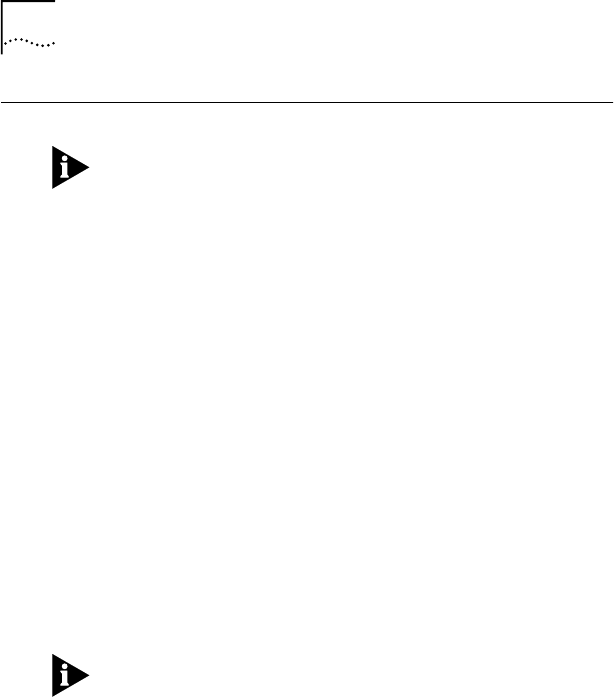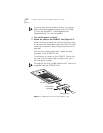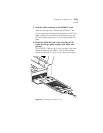
1-4 CHAPTER 1: INTRODUCTION
Point Enablers
Windows NT currently uses a point enabler called
PCMCIA.SYS, which currently ships with Windows NT.
OS/2 requires Card Services.
Point enablers are small programs that provide an
interface directly to the PC Card controller; therefore,
they must be written to support a particular type of
controller. For the 3C389 PC Card, there are point
enablers for the Intel chip (most PCs) and for the chip
installed in the Toshiba 3300SL.
In the DOS environment only, you have the option of
using these point enablers instead of Card and Socket
Services.
Two point enablers are supplied for this PC Card:
■ POINTTR.EXE—For PCs with Intel PCMCIA controllers,
including the IBM ThinkPad, Toshiba 4500 and later,
and many other makes.
■ TOSHTR.EXE–For the Toshiba T3300SL.
When using the point enabler, it is vitally important that
you make certain that the system resources used by the
PC Card are different from and do not conflict with the
system resources and any other PC Cards installed in
your PC.
Advantages
Enablers consume no memory—they remove themselves
after configuring the PC Card.
Disadvantages
You must specify the slot number; the point enabler will
enable only that slot. Therefore, the PC Card must always
be in a specific slot.
In some PCs, the slot may not be switched off when the
PC is in suspend mode, so the PC Card will continue to
consume power.


















